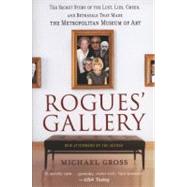
Note: Supplemental materials are not guaranteed with Rental or Used book purchases.
Purchase Benefits
| Leaders of the Metropolitan Museum | p. xi |
| Introduction | p. 1 |
| Archaeologist 1870-1904 | p. 21 |
| Capitalist 1904-1912 | p. 65 |
| Philanthropist 1912-1938 | p. 113 |
| Catalyst 1938-1960 | p. 171 |
| Exhibitionist 1959-1977 | p. 237 |
| Arrivistes 1974-2009 | p. 373 |
| Afterword | p. 487 |
| Acknowleldgments | p. 497 |
| Notes | p. 501 |
| Bibliogoraphy | p. 533 |
| Index | p. 539 |
| Table of Contents provided by Ingram. All Rights Reserved. |
The New copy of this book will include any supplemental materials advertised. Please check the title of the book to determine if it should include any access cards, study guides, lab manuals, CDs, etc.
The Used, Rental and eBook copies of this book are not guaranteed to include any supplemental materials. Typically, only the book itself is included. This is true even if the title states it includes any access cards, study guides, lab manuals, CDs, etc.
Excerpted from Rogues' Gallery: The Secret Story of the Lust, Lies, Greed, and Betrayals that Made the Metropolitan Museum of Art by Michael Gross
All rights reserved by the original copyright owners. Excerpts are provided for display purposes only and may not be reproduced, reprinted or distributed without the written permission of the publisher.